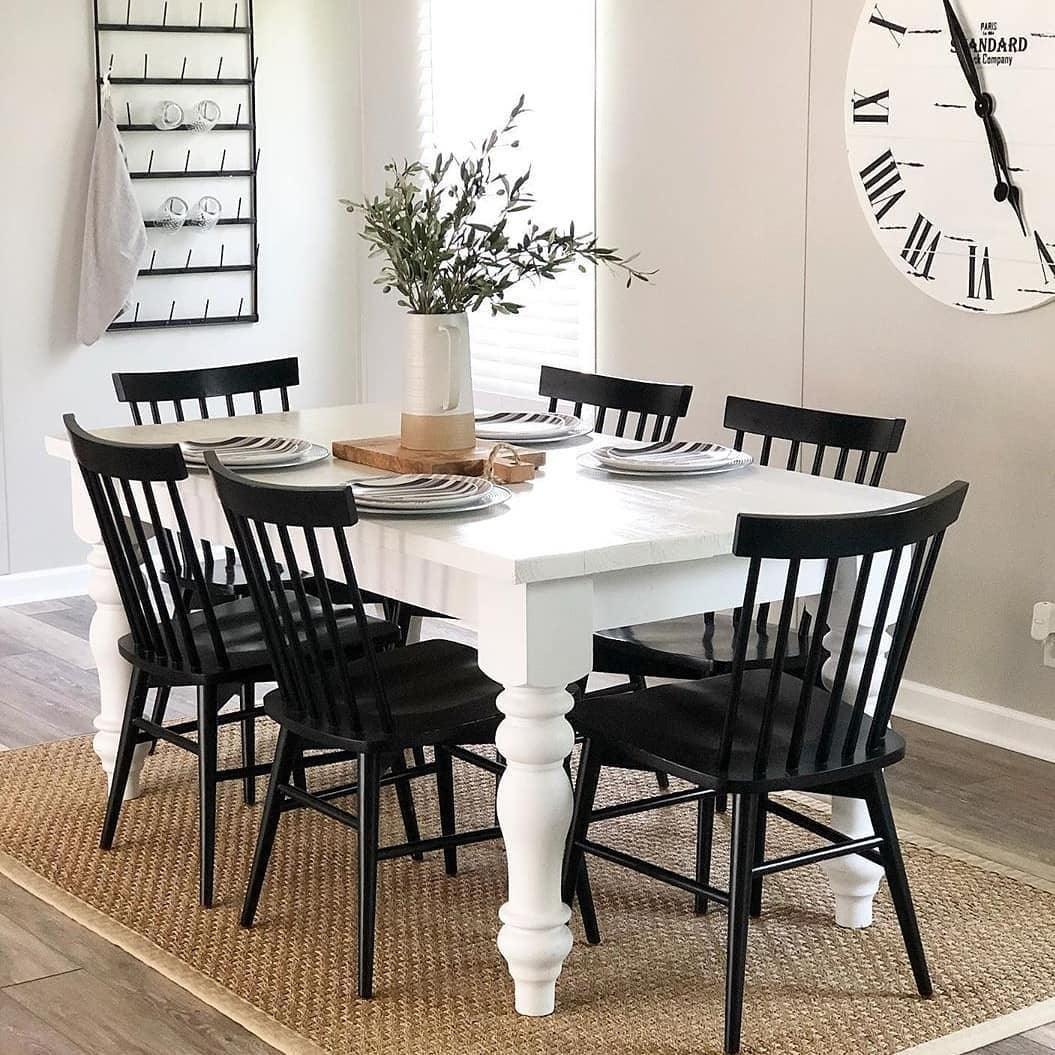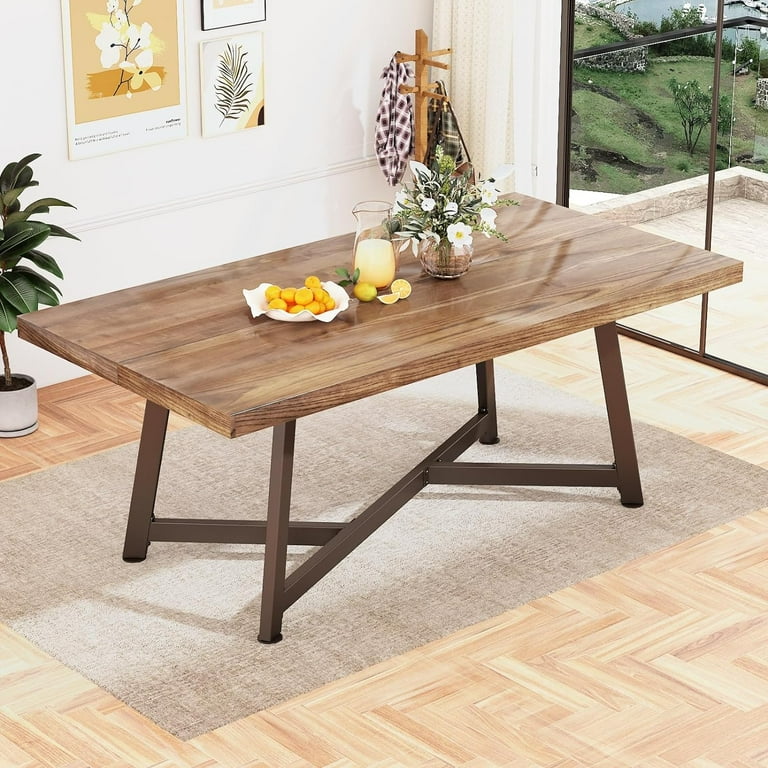Exactly How to Select the Perfect Dining Area Table Legs for Your Home Décor
Picking the suitable eating space table legs is a nuanced process that calls for cautious consideration of numerous aspects, including your room restrictions, visual choices, and practical needs. The interplay between materials, dimensions, and styles can considerably affect the setting of your eating area, making it crucial to approach this decision carefully.
Assess Your Eating Room
Assessing your dining space is essential for picking the right table legs that enhance both appearances and functionality. Begin by measuring the measurements of your dining area, consisting of ceiling elevation, flooring room, and closeness to various other furnishings. This details will certainly help determine the ideal dimension and height of your eating table, which directly affects the option of table legs.
Following, consider the design and layout of your eating room. For circumstances, an open-concept layout might profit from table legs that offer aesthetic lightness, such as slender steel or acrylic options. On the other hand, an extra standard setup may require sturdy wood legs that offer a sense of permanence.
Evaluate the existing shade palette and materials in your dining location. Harmonizing the table legs with these components creates a natural appearance that improves the overall style.
Ultimately, a thorough analysis of your dining area will certainly lead you in making an educated choice, ensuring that your table legs not just enhance the aesthetic charm yet likewise serve functional functions.
Consider Your Design Preferences
When picking eating space table legs, it is vital to assess your individual style choices, as they dramatically affect the general aesthetic of your eating area. Your selection of table legs can either complement or contrast with existing decor, making it crucial to align them with your recommended indoor layout theme.
If your home leans towards a modern-day aesthetic, think about smooth steel or minimal wood legs that give a tidy, clean appearance. For an extra traditional strategy, luxuriant wooden legs with complex carvings can include a touch of sophistication and sophistication. Industrial styles gain from robust, basic materials such as recovered timber and steel combinations, reflecting a tough appeal.
In addition, farmhouse and rustic styles commonly favor sturdy, beefy legs that stimulate a feeling of heat and convenience. On the other hand, if your design is diverse, you may choose unusual forms or a mix of products to produce visual rate of interest.

Evaluate Material Options
The option of product for dining room table legs plays a pivotal function in both toughness and visual allure. Typical materials consist of timber, metal, and composite choices, each offering distinct features that can influence the general appearance and longevity of your table.
Timber is a traditional choice, understood for its warmth and flexibility. Woods like oak and walnut give outstanding toughness and can be completed in various discolorations to match any decor. Softwoods like yearn are more prone to damages and scratches, making them much less excellent for high-traffic locations.
Metal legs, frequently crafted from steel or light weight aluminum, emanate modernity and industrial beauty. They are immune and highly sturdy to use, making them ideal for households with youngsters or frequent celebrations (dining room table legs). Furthermore, steel can be completed in various colors, enhancing the personalization opportunities
Composite materials, such as MDF or laminate, offer price and varied layouts. While commonly much less long lasting than solid wood or steel, they can still supply an elegant look and are often very easy to preserve.
Ultimately, the product you pick ought to align with your lifestyle, aesthetic choices, and the degree of usage your eating table will certainly experience.
Determine Elevation and Size
Selecting the appropriate height and dimension for your dining space table is crucial for both performance and comfort. The basic elevation for dining tables generally ranges from 28 to 30 inches, permitting ample legroom for many individuals when seated. Nonetheless, it is important to think about the measurements of your eating area and the kinds of chairs you intend to utilize.

Moreover, consider the percentages of your dining-room. A bigger table in a roomy location can produce a grand setting, while a smaller sized table works well in even more intimate settings. Ultimately, the ideal elevation and size will certainly harmonize with your general style and boost the eating experience for you and your guests.
Explore Personalization Possibilities

Additionally, the style of the legs can be tailored to fit numerous styles, such as rustic, modern, or industrial. As an example, conical legs can stimulate a mid-century modern-day feel, while chunky, block-style legs may reverberate with traditional or farmhouse decoration.
Home owners can also check out color surfaces, from all-natural wood stains to repaint, enabling them to match or comparison with Click Here the table top and surrounding decoration.
Additionally, leg elevation can be gotten used to accommodate details seating setups or personal preferences, improving both comfort and performance.
Lastly, one-of-a-kind decorations, such as carvings or attractive braces, can better individualize the table legs, making the dining experience not simply a meal however a statement piece in the home. By considering these modification choices, property owners can create a dining-room table that absolutely mirrors their uniqueness.
Final Thought
Selecting the optimal dining room table legs requires cautious consideration of numerous elements, including the measurements of the eating space, design preferences, product durability, and desired elevation. Personalization alternatives additionally improve the capability to accomplish a natural aesthetic that enhances the general decoration. By methodically evaluating these components, home owners can make certain that the chosen table legs not just meet useful needs but also add positively to the dining experience and setting of the home.
Selecting the suitable eating room table legs is a nuanced procedure that needs careful consideration of numerous elements, including your room constraints, visual preferences, and useful requirements.Examining your more helpful hints dining space is critical for choosing the right table legs that match both aesthetic appeals and performance.When determining size, determine the area where the table will certainly be put to ensure it fits conveniently, allowing for at least 36 inches of clearance around the table for easy activity. A bigger table in a sizable location can create a grand atmosphere, while a smaller sized table works well in more intimate setups.Choosing the ideal eating area table legs requires careful consideration of different variables, consisting of the measurements of the dining area, design preferences, material durability, and wanted height.